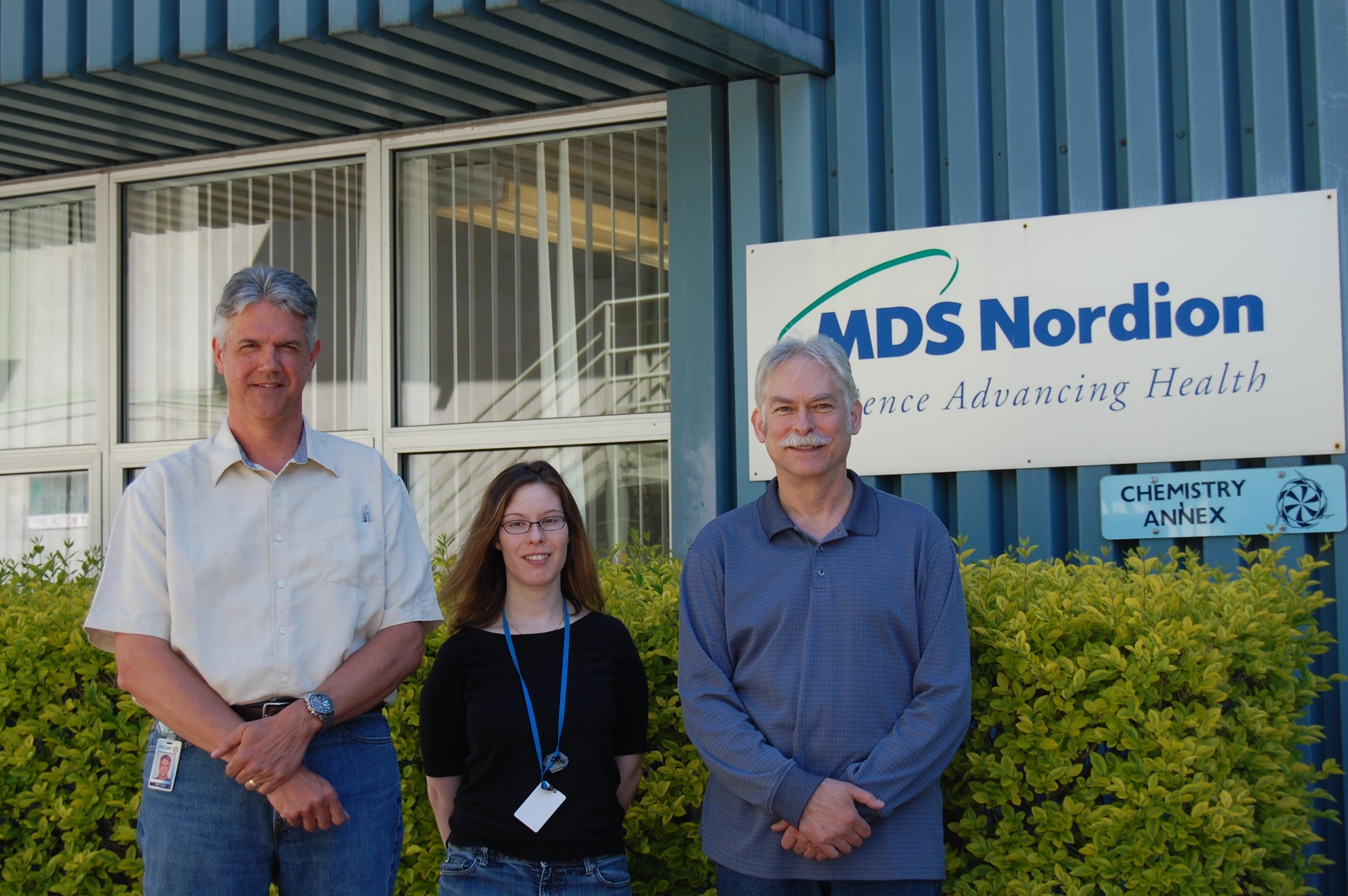Mike Adam (TRIUMF) and Cara Ferreira and Dennis Wester (MDS Nordion) are key proponents in the new strategic partnership
Hot on the heels of the recent Molybdenum-99 Collaboration between TRIUMF, Canada's national laboratory for particle and nuclear physics, and MDS Nordion, a leading global provider of medical isotopes and radiopharmaceuticals used in molecular medicine, comes the announcement of a strategic new partnership between TRIUMF, MDS Nordion, and the University of British Columbia to develop new diagnostic imaging agents utilizing novel chemistry with new medical isotopes.
"This collaboration combines the fundamental strengths of TRIUMF's expertise in radiopharmaceutical developments and radiochemistry research and MDS Nordion's strength as a world leader in radioisotope production," said Mike Adam, TRIUMF Research Scientist and Principle Investigator of the partnership. The goal for the collaboration is to achieve a long-term, medical isotope solution to meet the evolving needs of the global nuclear medicine community and to drive new innovation in the field of molecular imaging technology.
"Medical isotopes," explained Adam, "are radioactive isotopes of an element that decay by a particular pathway that is useful in medical imaging or therapy." These radioactive isotopes emit a signal that can be detected by special equipment and when small quantities of medical isotopes are introduced into the body, the imaging equipment is able to track their location and movement.
There are many radioactive isotopes but only some can be used in medicine, like the therapy medical isotopes which decay to give off alpha or beta particles that destroy cells in tumors. Adam described, "For use in diagnosis we need to know how the isotope or the molecule that the isotope is attached to, behaves in the body. For example, we know that most tumors have a high metabolic rate for glucose consumption. If we put a radioactive isotope on the glucose molecule we can see all the places in the body where there is high glucose consumption but only if the isotope gives off gamma rays that we can detect outside the body."
According to Adam, the benefits of the new partnership are three-fold: first, the use of non-invasive imaging tools, which the collaboration aims to improve, is of growing importance in the treatment of Canada's aging population; second, with the sale of imaging agents at multi-billion dollar levels worldwide, new radiopharmaceuticals may be of significant economic value to Canada; and third, the project also fulfills an urgent need in Canada for the training of highly qualified personnel in the area of radiochemistry.
In light of the recent shutdown of the Chalk River NRU Reactor, which produces medical isotopes used in the diagnosis and treatment of millions of patients every year, this new partnership is one step towards the creation of a longer-term solution to the development of alternative medical isotopes produced using particle accelerators.
-- Meghan Magee, Communications Assistant
Based on MDS Nordion's Press Release "MDS Nordion, TRIUMF, and the University of British Columbia Announce Partnership to Develop New Diagnostic Imaging Agents"

